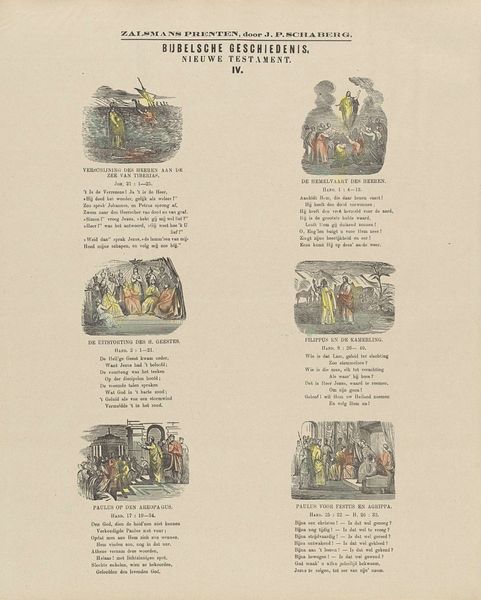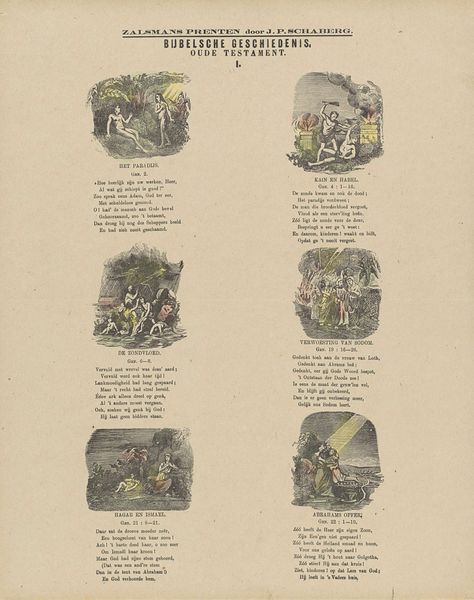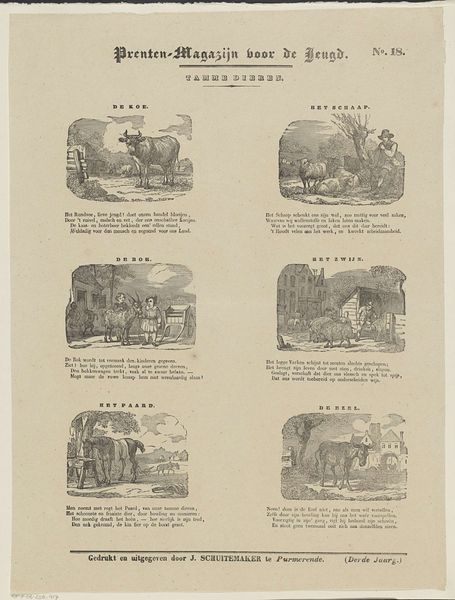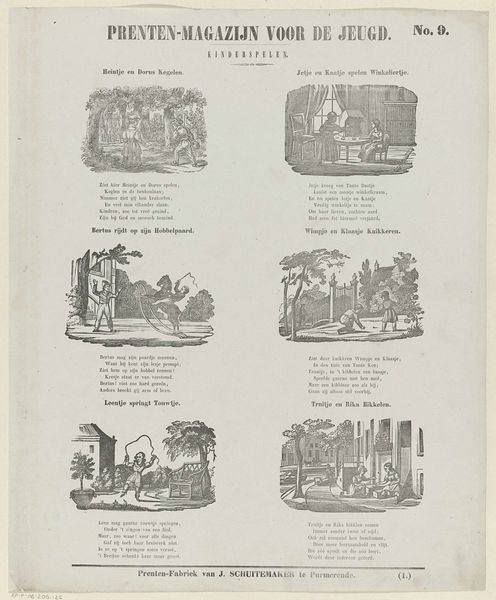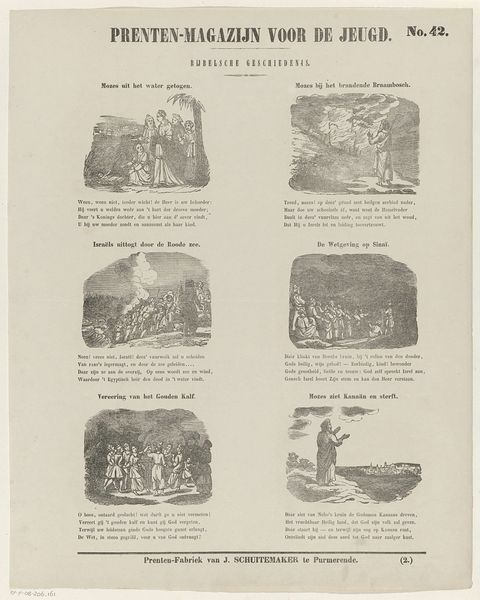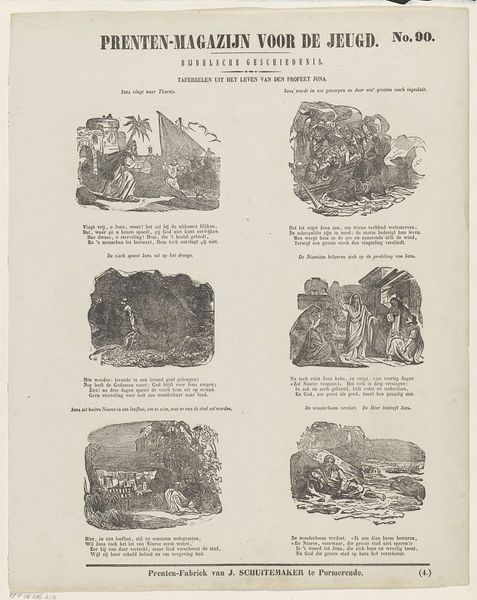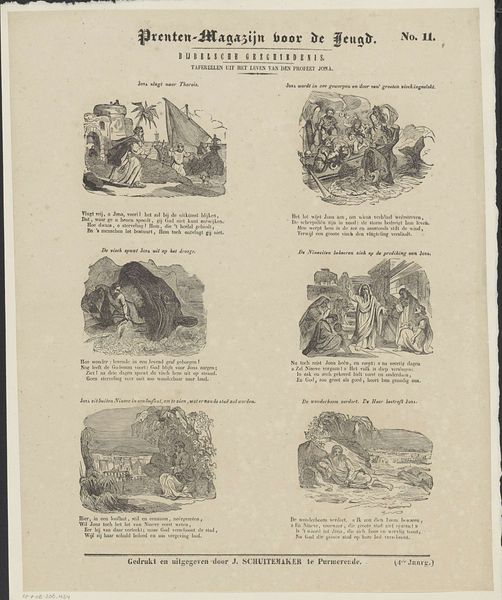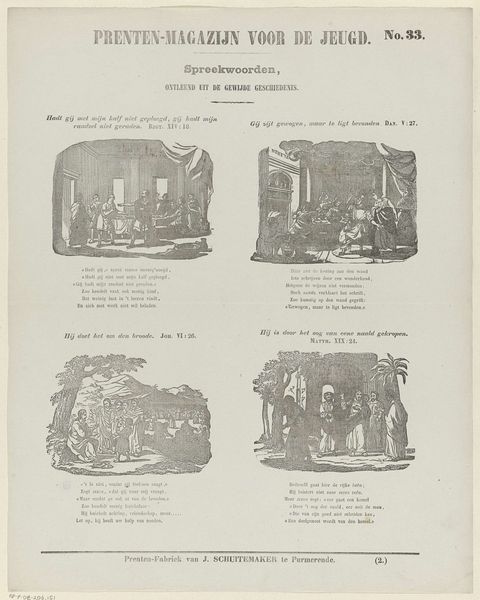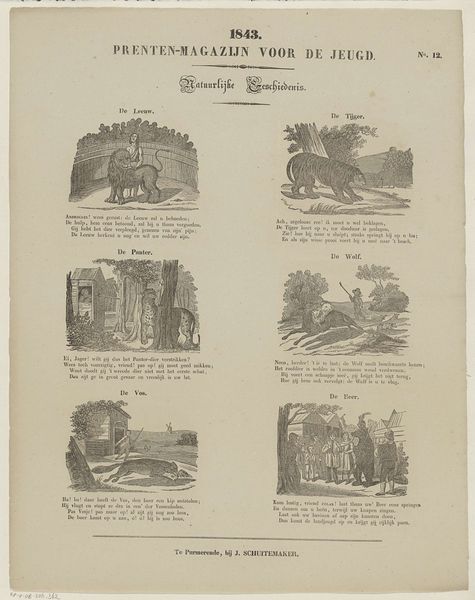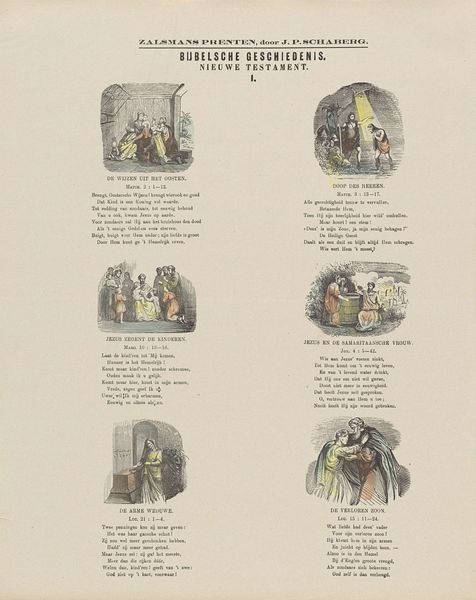
print, engraving
# print
#
history-painting
#
engraving
Dimensions: height 428 mm, width 345 mm
Copyright: Rijks Museum: Open Domain
Curator: Immediately, the stark contrasts create an intense mood – these images, even in miniature, evoke powerful emotions. The dynamism suggested by line and texture pulls the eye from one scene to the next. Editor: We are looking at a print entitled “Bijbelsche Geschiedenis / Nieuwe Testament,” or Biblical History/New Testament, made sometime between 1869 and 1882. The artist responsible is Gerhardus Philippus Zalsman, and the medium is engraving. Curator: I find the composition remarkably effective. Notice how each of the six vignettes contains a different spatial depth. This creates an illusion of unfolding narrative, drawing you deeper into each episode of the story through its implied vanishing points and shifting scales. Editor: Indeed, each segment presents key narratives from the New Testament. Viewing them collectively, especially considering the proliferation of printed imagery during the late 19th century, prompts considerations regarding dissemination of religious teachings and visual culture for the masses. It provided accessible theology in the homes of an emerging middle class. Curator: Precisely! See how Zalsman has modulated the intensity of shadow and illumination to produce different expressive qualities in each compartment? A stormy scene versus the raising of Lazarus... Editor: Furthermore, the visual and textual presentation reflects an interesting relationship. The engraved illustrations combine with the passages underneath to reinforce shared cultural values, offering an interesting perspective on religion, literacy, and accessibility during this period. This form of narrative dissemination allowed the content to penetrate broader audiences. Curator: I see what you mean, it's not merely about representing scenes from the Bible but rather instilling moral and ethical perspectives through the very act of witnessing them, even if removed from the religious building. Editor: Absolutely, and one can almost envision how a family might gather around such a print to study its religious and ethical lessons through word and image. Curator: An astute and thoughtful approach that marries formalism with a wider socio-historical canvas... food for thought. Editor: Likewise – such detailed analysis and careful attention to structure helps appreciate the intentions within these engravings.
Comments
No comments
Be the first to comment and join the conversation on the ultimate creative platform.
